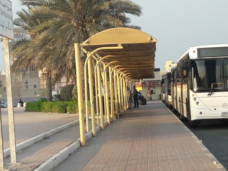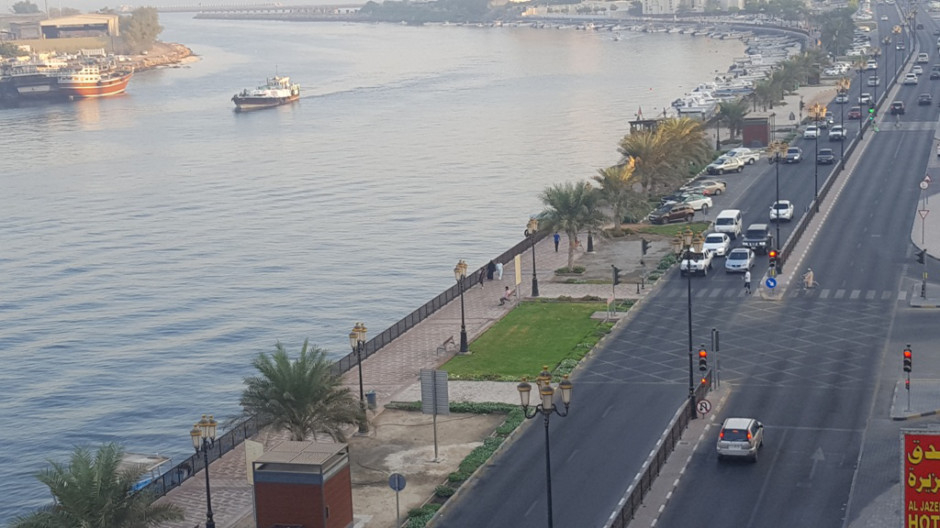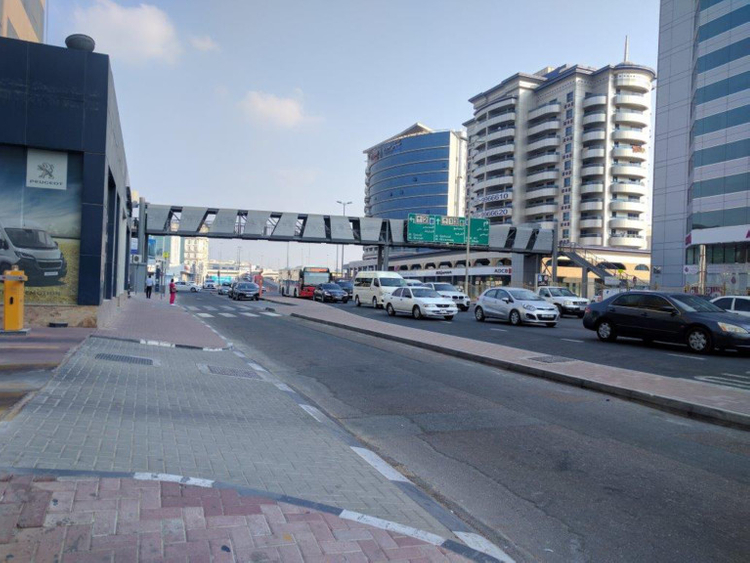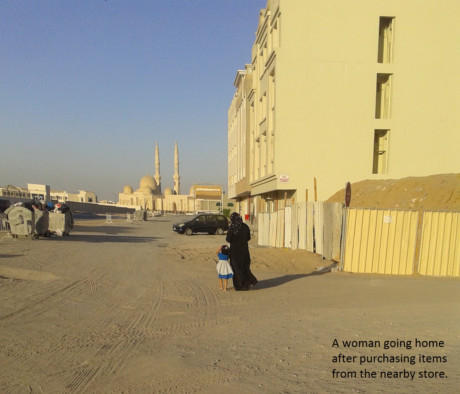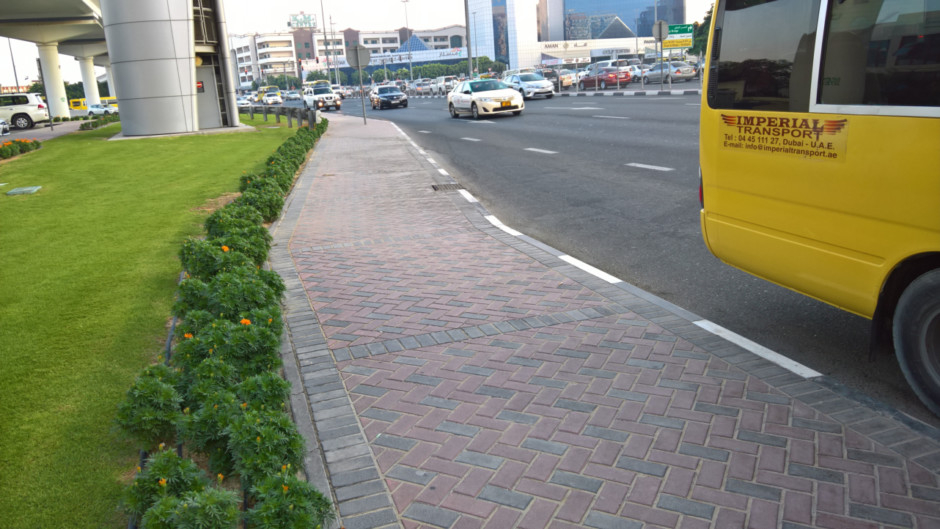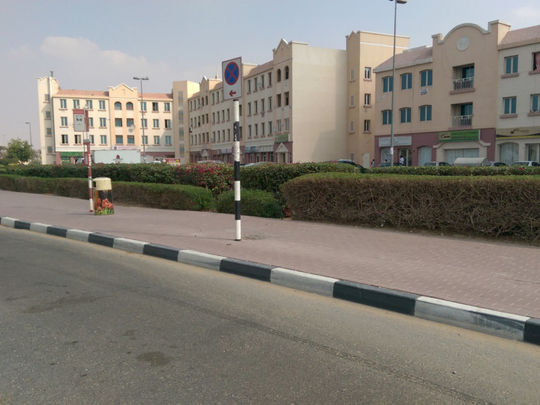
Dubai
Mercury is dropping, the weather is pleasant. Time to get out those walking shoes. But, is your area pedestrian friendly?
The US Environmental Protection Agency’s Urban and Economic Development Division has published a list of guidelines for a city to be considered suitable for walking, along with offering adequate public transport (see box). Gulf News community reporters use these guidelines to do a quick survey of the areas they live in the UAE. Read on to find out the results ...
Al Mareija area in Sharjah surveyed by Rohan Kapur, a student based in Sharjah.
The area, also known as the ‘Heart of Sharjah’, meets a lot of the international guidelines, reports Kapur. Additionally, the authorities carry out “regular maintenance of the facilities” in the area, with a historical restoration project that was initiated in 2013.
Kapur told Gulf News: “I feel fortunate to be living in the area. Residents enjoy healthy living by going for a walk or a jog and even exercise in the area.”
While walking in the area, Kapur noticed how the entire community has a well-constructed pavement, of at least eight feet, for pedestrians to walk on. Additionally, there are trees planted across the entire route with benches for those who wish to rest. Marked pedestrian crossings are available for pedestrians every 100 feet and there is a bus stop, too.
International City in Dubai surveyed by Manouj Aswaani, a sales and marketing professional.
The community has been in the news for several issues, such as overcrowding — an issue that has left Aswaani concerned, too. However, in August, officials from Trakhees, the regulatory agency for freehold properties and businesses in special development zones, started door-to-door inspections at International City to curb this menace.
For this, Aswaani is grateful because in his opinion, the community is “much better” than others around the emirate.
He said: “There are proper pavements for pedestrians to walk and a lot of pedestrian crossings on the streets around the whole area. Additionally, there are a lot of bus stops, one at almost every 100 metres. There is a bus service that works around the clock, picking passengers and dropping them to the main stops, which leads to other areas or to the Metro stations. A lot of taxis are also available. This is the best community in terms of public transport and walking from one point to the other.”
The trees planted across the wide pathways provide ample shade for those who are walking. The only thing lacking, according to Aswaani, are benches.
Al Khalidiya area in Abu Dhabi surveyed by Firdous Mohammed Farooq, a student based in Abu Dhabi.
One thing that stands out in this area is the easy access to public transport, Farooq said. There is a bus stop at every kilometre, which makes it very easy for residents of the area to walk to the closest one and take the bus to their destination.
Bus stops are equipped with proper seating areas. Additionally, benches along the pavements allow pedestrians to “take a break if they get tired”.
Farooq said: “A few of the international guidelines could be looked into by the authorities. In some areas the pavement is too narrow and is less than six feet. While other areas have wider pavements despite having light pedestrian traffic. Wider and better-maintained pavements and mid-block signal crossings are needed across the city.”
Despite there being several marked pedestrian crossings and underground crossings on the main roads, many pedestrians try to save time by jaywalking, he said. A fence that has been placed on the main road has been broken at certain places and the gaps are used by people.
“People tend to risk their lives just to save a few minutes,” said Farooq.
Al Karama area in Ajman surveyed by Anagha Rajesh, a pupil based in Ajman.
As a resident of this area, Rajesh is content with the facilities provided for pedestrians. There are six-feet wide pavements that run through the area and clearly marked pedestrian crossings at every 100 feet allow people to cross the road with ease. Additionally, public transport can easily be accessed through the bus stops located at approximately at every one kilometre distance. However, Rajesh believes that the authorities should consider working on landscaping.
She said: “Comfortable and safe places to wait are very uncommon here. There aren’t a lot of trees either.”
Oud Metha area in Dubai surveyed by Meena Shivnani, a homemaker based in Dubai.
As a person who loves to walk, Shivnani isn’t entirely satisfied with her surroundings. In comparison to international standards, her area is slightly behind on some of the facilities. “With the weather getting better, we want to be outdoors more often. But, unfortunately there aren’t enough walking tracks, which becomes inconvenient,” said Shivnani.
There are pavements running through the area, but are quite narrow and make it difficult for people to walk with comfort. There aren’t any seating areas or benches installed and a few trees are placed far apart from each other along the stretch of road.
She said: “There are a lot of elderly who are not willing to walk as they cannot rest in between. It would be helpful if better seating arrangements were installed in all areas.”
Shivnani also highlighted that the parks in the area do not have jogging tracks and hopes that the authorities would at least consider installing those for people who would like to go for a walk.
Muweilah Commercial Area in Sharjah surveyed by Mohammad Aarham Faisal, a student based in Sharjah.
The change of weather has brought a change in this community, too. Faisal has spotted children gather outdoors more frequently to play and people going for a walk for fitness. However, the lack of a proper pavement or paved roads running through the area is a discouraging factor.
He said: “My area doesn’t meet the necessary requirements to encourage walking. Some people can be seen jogging on the sides of buildings, but are unable to go far as there is no cemented road or pavement.”
In his opinion, the area is less developed and needs the authorities to make some changes. The closest bus stop is a kilometre away. Since there isn’t a paved road in Faisal’s immediate vicinity, there are no benches or trees there either. To reach the mosque, residents have to cross a main road, which does not have a marked pedestrian crossing. “You have to risk your life every time you go for prayer,” said Faisal.
Deira area in Dubai surveyed by Nitin Kumar, a sales coordinator based in Dubai.
Dubai is a cosmopolitan emirate and there are adequate facilities for pedestrians, according to Kumar. In his area, Kumar found a pavement along all major roads and easy access to bus stops and Dubai Metro stations. He also commended the taxi service in the emirate as they are “efficient and we don’t need to wait for them”.
There are marked pedestrians crossing at all major intersections. His only concern, the lack of a pedestrian bridge in his vicinity. “But, the authorities are making an effort in constructing many bridges around the emirate,” said Kumar.
His area even has community parks, which people can walk to and relax. The walk there during the day time isn’t hard either, with trees providing ample shade for the pedestrians.
“This area has a very high standard regarding pedestrian care,” said Kumar.
It seems like most of the surveyed areas are keeping pedestrian comfort in mind. With easy access to public transport, wide pavements and marked pedestrian crossings, people are not finding it hard to walk around.


